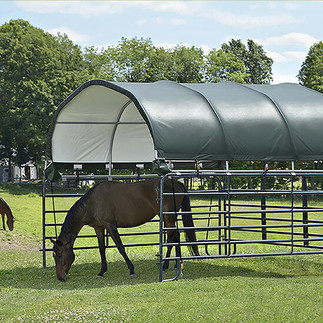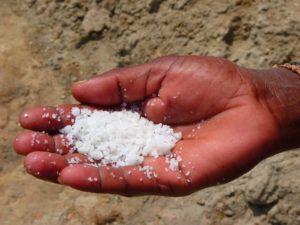REPOST 10 Tips for Keeping Horses Comfortable in 100° Temperatures
- On Course Equine Nutrition
- Jul 31, 2023
- 5 min read
How do we help our horses to be more comfortable (I'm assuming no one reading this has air conditioned barns) in the summer heat and how do we prevent heat related illnesses?
Horses are really incredible creatures. Back in January, when temperatures plummeted below zero for multiple days, their hair coats and circulatory system kept them alive. Now, just a few months later and 120 degrees warmer they are faring just fine again. How do they do it?

This article is about how to keep our horse's more comfortable in extreme heat and how to mitigate our anxiety as horse owners caring for them. I did some digging into scientific journals, Google scholar, the AAEP findings, and other valid resources in order to parse out what was real and what was fiction when it came to managing horses in extreme heat. I'm going to split my studies into two articles; one that addresses horses beating the heat when not working and a second on competing in hot/humid climates. There is a good chance that in two short weeks I'll be running 520 meters per minute for more than five minutes at Rebecca Farm in very hot conditions- which is very different than simply keeping non-working horses comfortable! So, let's start with horses that are not working during the heat of the day.


The Great 2021 Heat Wave has come and gone, but heat waves will strike again. So, how do we prepare for the inevitability of scalding summers days? I think that the first answer is very, very, shockingly simple- plan ahead- and then stop worrying about it. Have these 10 items purchased and accessible long before the next heat wave, because the worst-case scenario is heading to the local retail stores days before an extreme temperature event only to find the shelves empty!
Your Heat Wave Toolkit:
1. Rectal thermometer. A body temperature over 104 for sustained period is very dangerous. At this point, the body has lost its ability to remove heat and you must be quick to cool the horse off
2. A watch for measuring pulse, respiration rate, and capillary refill time (maybe a stethoscope). This would only come in handy if you expect your horse to be suffering from heat stress. You can monitor your horse's vital signs before the veterinarian arrives.
3. Shade structure- temporary or permanent. I hold off grazing my shaded pasture for hot summer days. The pines provide a shade option during the hottest parts of the day even if I do often find them standing on the opposite side of the pasture! I also have goggled at the ShelterLogic Corral Shelters (cheapest on Cabela's website) many times. I find them to be a great value if you have the right fencing to erect them. I hear that they are quite durable. A temporary tarp stretches across some horse trailers or sturdy structures could work too!
4. Two water buckets with volume lines know how many gallons per day is normal for your horse! I have written about this multiple times, because MOST colics are related to poor water consumption. Do take the time BEFORE a colic event to manage water intake. If you need more ideas about maximizing water consumption, check out my previous post titled [Your Secret Weapon] 5 Steps to Predict Water Consumption.
5. Favorite electrolytes in a tube. I simply prefer electrolytes in tubes. This is because I know they are getting them when they need them, and because I know that daily electrolytes have found not be helpful. Look for electrolyte products where the first ingredient is NOT sugar. KER Restore or KPP Summer Games Plus are good options.
6. Sweet feed for water flavoring (i.e. rolled oats in molasses or C.O.B. in molasses). Research has shown that horses prefer sweet feed soaked in water over plain water and apple flavored electrolytes (Van Diest et al., 2021). Start by adding small amounts of water to sweet feed soaked for 30 minutes and slowly increase the amount of water until the horse has to slurp down a gallon of water to get to the sweet feed. No matter what you do to horses' water, I insist on having a separate, clean, ambient temperature water source in addition to the flavored bucket just in case the flavoring deters them.
7. Plain white granular salt (NaCl/Sodium Chloride). Plain white salt usually comes separate from your electrolyte supplement or paste tube. It is a nutrient unavailable from hay, pasture or feed stuffs. It's nice to start adding 1-2 TB of plain loose salt into your horse's diet before the heat wave arrives. Actually, ALL horses should have access to plain white salt sources at all times, but adding additional salt in loose form to the feed or water is helpful for increasing water consumption.
8. Fans and Misters with heavy duty extension cords. Watch that you don’t overdo your power circuits with too many fans or misters in the barn. Overloading power circuits is a real threat too. Know beforehand what amperage your barn can handle. I put sprinklers out in my summer time pasture, but of course, my brave event horse was petrified of them!
9. Bug protection, because bugs come with heat. My favorite bug sheets are the Schneiders' Mosquito Mesh Fly Sheets, but I do NOT keep them on during the heat of the day. I prefer to allow the horse's natural body temperature controls to do their work rather than unnatural clothing. Instead, I spray horses down with Repel-X (best value for my dollar), and smear SWAT over Stella's chest, udder area, and under jaw. I'm trying a concoction of coconut oil with equal parts SWAT to make it last longer and soothe the skin. I'm also a big fan of DEET...I know...I know...you cringe at this, but if you saw the army cloud of mosquitoes attacking your horses like I have, you would appreciate DEET too!!!
10. Desitin for sensitive white noses. My OTTB, Firn, has been grazing in the clover which contains some photosensitive chemicals and requires that I smear Desitin on her white noggin to prevent sunburn. You can purchase Desitin, a zinc based compound, at any pharmacy, Target, or Super Store. It's usually in the baby diaper isle.

It really is the simple things that are the most effective- shade, fresh water (not ice cold/not hot), and exercise relegated to super human early hours! Monitor your horses' TPR with a watch, thermometer, and diligence if you're extra worried. The truth is that most horses will do just fine. Horse's at the highest risk of heat stress or heat stroke do include...
foals
overweight/ fat horses
horses in trailers
horses without access to shade
horses with anhidrosis- a life threatening disease where horses do not sweat as they should.
exercising horses when the sum of the sun temperature plus humidity is over 150 and especially when humidity makes up more than half that number. https://aaep.org/horsehealth/heat-stroke
Throughout this heat wave, I've learned that a) no matter what you do for your horse's, they often do not appreciate the effort as much as you'd like, b) most horses don't eat popsicles, and c) I am FAR more sensitive to heat than my horse is, so she has nothing to worry about. I will quit long before my horse is at risk! Which does worry me for my next horse show coming up in two weeks. Stay tuned for next week, when I'll discuss the science based research around competing horses in hot temperatures.
References:
Butudom, P., D.J. Barnes, M.W. Davis, et al. 2004. Rehydration fluid temperature affects voluntary drinking in horses dehydrated by furosemide administration and endurance exercise. The Veterinary Journal. Volume 167(1): 72-80. ISSN 1090-0233,
Van Diest, T.J., C.J. Kogan, and J.J. Kopper. 2021. The Effect of Water Flavor on Voluntary Water Intake in Hospitalized Horses. Journal of Equine Veterinary Science. Volume 98. ISSN 0737-0806. https://doi.org/10.1016/j.jevs.2020.103361.
JEFFCOlT, L.B. and C. W. KOHN. 1999. Contributions of equine exercise physiology research to the success of the 1996 Equestrian Olympic Games: a review. EQUINE EXERCISE PHYSIOLOGY 5 Equine vet. J., Suppl. 30: 347-355.



















Comments